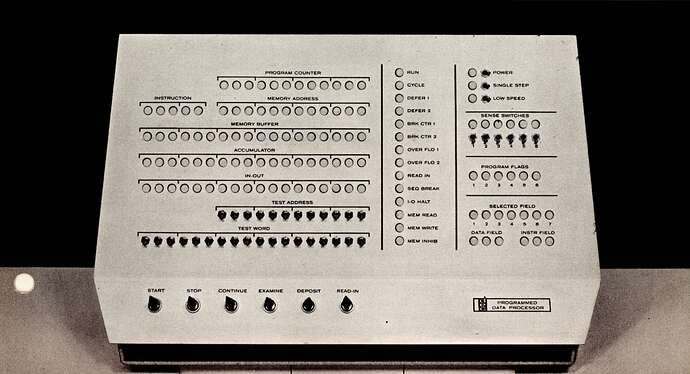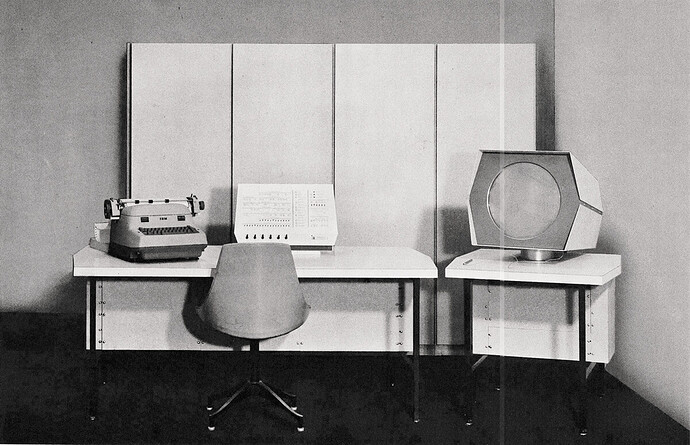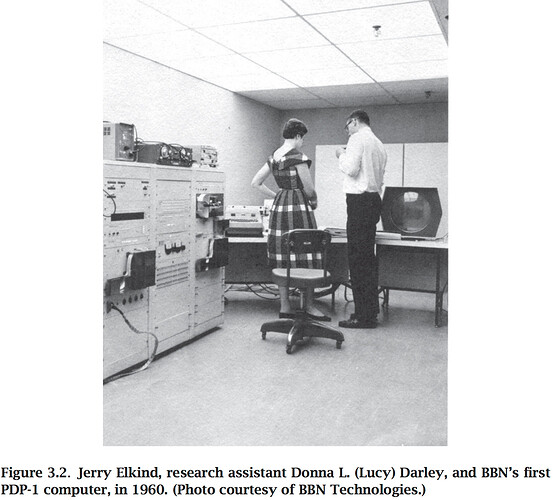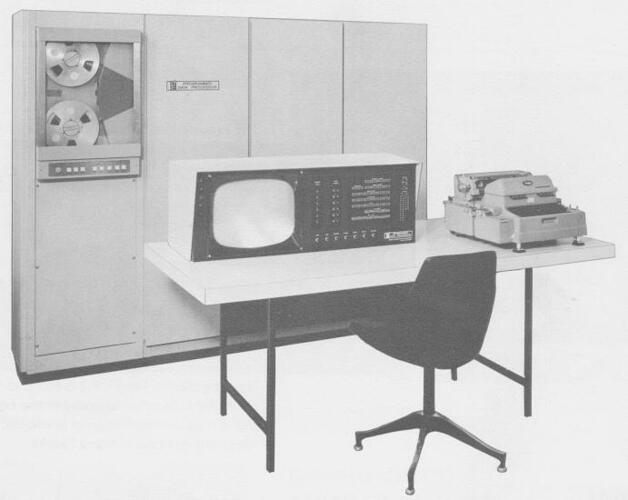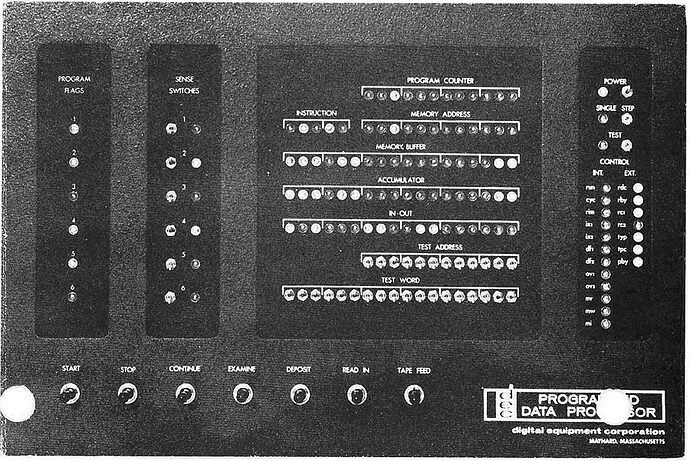This post, or rather, a small note in the linked page (“Oddly enough, an earlier DEC logo was used on the PDP-1 console, seen at the right.”), has driven me into some research activity.
Specifically, it’s about a mystery PDP-1 prototype seen in earlier DEC material, showing a white machine and this console with the early logo. Here from a DEC brochure from March 1961:
And the entire system (image edited, original in brownish print, gap at page break stitched):
What’s especially interesting about this machine are the SELECTED FIELD, DATA FIELD and INSTR FIELD console lights at the lower right of the console, which are nothing like the extended addressing architecture on the production PDP-1, but very much like the DF/IF registers on the PDP-8 with the Memory Extension Controller. (This suggests that this bank switching scheme was originally developed for the PDP-1 and then repurposed for the PDP-8). Also, there are duplicate control lights for “defer” (indirect addressing) and the overflow flag (labeled “1” and “2”), not found on any other PDP-1.
This might be actually, the PDP-1B prototype, which was intended for the Lawrence Livermore National Laboratory (LLNL), but, as the order was delayed, went to BBN. (The LLNL then received the second PDP-1B prototype, which is already very much like the production machine, at least externally).
There are also photos of a “PDP-1 unveiling” event with Ken Olsen showing a white PDP-1 with 4 cabinets, which were probably shot at BBN.
Here’s a photo of the BBN machine, from “A Culture of Innovation – Insider Accounts of Computing and Life at BBN” by David Walden and Raymond Nickerson (ed.), 2010; p. 51:
This looks very much like the same machine, but sadly we can’t see the console.
Here’s a blurry image from “Digital Equipment Corporation – Nineteen Fifty-Seven to the Present” (DEC 1972), which seems to show the same setup:
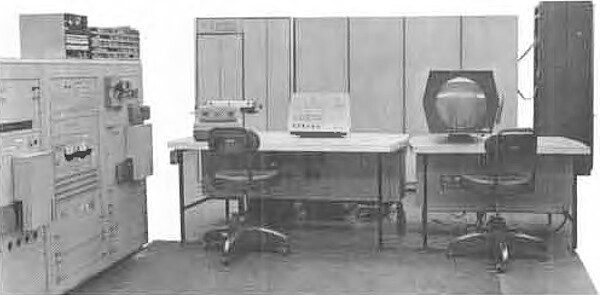
However, there are differences. The console seems to show controls for the normal extended address bus architecture (compare the second row from the bottom at the left side to the mystery machine).
Moreover, the Type 30 display (seen at the right) doesn’t match: The photo in the brochure and the verified BBN image show an early version with a short table/cabinet, while this one shows a packaging much like found with the production scopes (wide table with control lights). – Is this the same machine at a later stage?
It seems to be the only machine with a DF / IF bank switching scheme. Compare the first PDP-1A protoytpe:
This one is lacking any provisions for extended memory and also any of the duplicate defer and overflow lights:
The PDP-1 Restoration Team at the CHM hasn’t any information on this, so it’s a true mystery. Does anyone know more about this?


